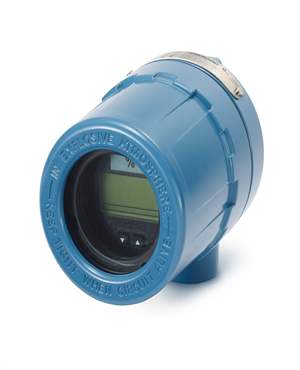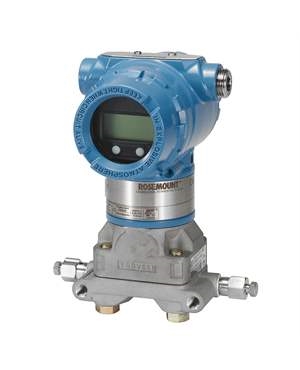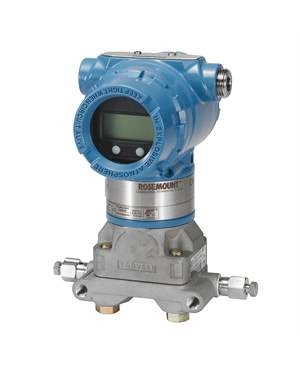Common Challenges in Air Flow Measurement and How to Overcome Them
Brian Craig
October 17, 2023
Air flow measurement playing important role in numerous industries, from ensuring the efficiency of HVAC systems to optimizing combustion processes in power plants. The task of measuring air flow is not without its challenges and professionals across different fields encounter a range of obstacles that can impede the accuracy of their measurements.

The precise measurement of air flow rates is essential for several reasons:
- Energy Efficiency: Accurate measurement allows systems to operate optimally, reducing energy consumption and environmental impact. Inefficient air flow can lead to unnecessary energy expenses.
- Environmental Compliance: Many industries must adhere to environmental regulations, which often include air quality and emission standards. Proper air flow measurement is essential for compliance.
- Process Control: In industrial applications, maintaining precise air flow rates is vital for consistent product quality and safety.
- Comfort and Safety: In HVAC, accurate air flow ensures comfortable and healthy indoor environments, preventing issues like poor air quality or temperature fluctuations.
In this blog, we will delve into the common challenges associated with air flow measurement and explore effective strategies to overcome them. Whether you're a technician working on ventilation systems or an engineer designing cutting-edge aerospace technology, understanding these challenges and the solutions available can make a significant difference in the success of your projects and the performance of your systems.
Common Challenges in Air Flow Measurement
Several common challenges can impact the accuracy of air flow measurements, and it's essential to be aware of these challenges to address them effectively. Here are some of the most prevalent issues:
- Sensor Accuracy: Air flow measurement relies heavily on sensors, such as anemometers and mass flow meters. These sensors can degrade over time or may not be inherently accurate. Calibration and maintenance are essential to ensure sensor accuracy. Even well-calibrated sensors may have limitations in certain flow conditions.
- Calibration and Maintenance: Sensors require regular calibration to maintain accuracy. Failure to calibrate sensors can lead to significant measurement errors. Additionally, sensors can become clogged or damaged, further affecting their accuracy. Regular maintenance is crucial to avoid these issues.
- Turbulence and Flow Disturbances: Turbulence in the air can disrupt the smooth flow of air, causing fluctuations in measurements. In HVAC systems, for instance, sharp bends in ducts, equipment placement, or air mixing can create turbulent conditions, making it challenging to obtain accurate flow readings.
- Changing Environmental Conditions: Variations in temperature, pressure, and humidity can significantly impact air flow measurements. These conditions can cause the density of air to change, affecting mass flow rates. To compensate for such changes, it's crucial to employ correction factors and sensors capable of environmental compensation.
- Installation Errors: Improper sensor placement can lead to inaccurate measurements. Sensors should be installed in a way that ensures a steady and undisturbed flow of air. Errors in installation can result in miscalculations of flow rates.
- Signal Interference: External sources, such as electromagnetic interference, can introduce noise or signal interference into the measurement system. This can lead to inaccuracies in the readings. Proper shielding and signal processing techniques are necessary to mitigate these interferences.
How to Overcome Challenges in Air Flow Measurement
To overcome the challenges and ensure precise air flow measurement, consider the following strategies:
- Use Appropriate Flow Measurement Devices: Select the right type of flow measurement device for your specific application. Common devices include orifice plates, venturi tubes, pitot tubes, thermal mass flow meters, and ultrasonic flow meters. Choose the one that is most suitable for your particular requirements.
- Calibration and Maintenance: Regularly calibrate and maintain your flow measurement devices. Calibration ensures that the instrument provides accurate readings, while maintenance helps prevent issues like sensor drift, fouling, or clogging, which can lead to inaccurate measurements.
- Proper Installation: Install the flow measurement device correctly according to the manufacturer's guidelines. Ensure that the device is oriented correctly, and the flow path is free from obstructions that might affect measurements.
- Temperature and Pressure Compensation: Measure and account for changes in temperature and pressure. This is especially important for gas flow measurements where the ideal gas law can be used to calculate mass flow.
- Damping and Filtering: Employ damping and filtering techniques to reduce noise and fluctuations in the measurement signal. Digital signal processing can help smooth the data and provide more stable readings.
- Use of Averaging Techniques: When measuring fluctuating air flows, consider using averaging techniques to get more stable readings. Time-averaging or space-averaging can be used based on the application.
- Consider Flow Profile: Ensure that the air flow has a fully developed profile before measurement. In cases where the flow is not fully developed, you may need to use flow conditioners or straightening vanes to stabilize the flow before it reaches the measurement point.
- Calibrate for Turbulent Flow: In applications where air flow tends to become turbulent, use turbulence models or correction factors to account for these conditions. Understanding the flow regime and its impact on the measurement can help you make more accurate calculations.
- Differential Pressure Measurement: If using differential pressure devices like orifice plates or venturi tubes, make sure that the pressure taps are correctly placed and that they remain clean and unobstructed.
- Remote Monitoring and Data Logging: Implement a remote monitoring system with data logging capabilities. This allows for continuous monitoring of air flow and helps identify anomalies or discrepancies in real time.
- Sensor Health Monitoring: Many modern flow measurement instruments come with diagnostic features that can alert you to issues like sensor drift, clogs, or other problems. Regularly check and maintain these sensors to ensure their reliability.
Which instruments are valuable for addressing the challenges in air flow measurement?
- Flow Meters: Devices such as orifice plates, venturi tubes, thermal mass flow meters and ultrasonic flow meters are commonly used to measure air flow.
- Transmitters: Multivariable transmitters, differential pressure transmitters and flow transmitters play a key role in converting measurement data into useful information.
- Calibration Tools: Proper calibration equipment ensures accurate and reliable flow measurements.
- Data Loggers: Data loggers help with recording and analyzing flow data over time, aiding in diagnostics and process control.
- Flow Conditioners: These devices are used to ensure a uniform and stable flow profile, especially in turbulent flow situations.
- Remote Monitoring Systems: Systems that enable real-time monitoring and remote data access for improved process control and problem detection.
- Sensor Health Monitors: Instruments with diagnostic features that can alert users to sensor issues, such as drift or clogging.
By understanding these common obstacles, you can take steps to enhance the precision and reliability of your air flow measurement systems. The Transmitter Shop (TTS) is a distributor of superior quality remanufactured transmitters and control valves originally sourced from reputed brands such as Fisher Vee-Ball, Rosemount and so on. The company specializes in remanufacturing, reconditioning, and calibration of devices. If you want to know more about our services please contact us via phone +1-888-964-8837, or via email at [email protected]
Related Posts
- What are the Steps Involved in Calibrating Pressure Gauge?
- All Important Questions on Reconditioned Transmitters Answered
- Is Remanufactured Transmitter a Better Option than a New One?
- Differential Pressure Transmitters: How Do They Help in Flow Measurements?
- 3 Whats that Explain How Often You Should Calibrate Pressure Transducer
- Guidelines for Troubleshooting Pressure Transducers
- Learn How to Calibrate a Pressure Transmitter – II
- Learn How to Calibrate a Pressure Transmitter
- Know Three Interesting Uses of Pressure Transmitters
- The Features and Benefits of Rosemount 1199 Direct Mount Transmitters
- 3 Major Pressure Transmitter Technologies That Made the Device Popular
- An Unconventional Guide to Selecting the Right Pressure Sensor
- Factors To Be Considered While Differentiating $40 and $400 Pressure Transmitters
- Tips to Augment the Performance and Service Life of Pressure Transmitter
- Factors of Consideration When Choosing Pressure Transmitters
- 5 Most Popular Pressure Transmitter Technologies
- Important Calibration Tips for Pressure Sensors
- Tips to Improve the Performance of Pressure Sensors
- Factors to Consider When Choosing a Pressure Transmitter Manifold
- Safety Tips for Differential Pressure Transmitter Operation
- Impact of Shock and Vibration on Pressure Transducer
- Rosemount 3051S vs 3051C Transmitter – What is Your Choice?
- Rosemount 2088 Vs Rosemount 3051 – A Few Points of Differences Discussed
- What Are Diaphragm Seals and Their Types?
- Difference in Conventional Transmitters and Smart Transmitters
- How to Choose Diaphragm Seals for Your Application?
- How to Select Pressure Transmitter for Your Application?
- Remote Seals: Significance, Working Principle & Applications
- How Do You Calibrate A Flow Transmitter?
- What is Absolute Pressure Transmitter & how does it work?
- HART Communication Protocol: Overview, Working Principle, Benefits in Industrial Automation
- Absolute and Gauge Pressure Transmitters - Overview and Working Principle
- Flow Meter vs Flow Transmitter: Know the Difference
- Temperature Transmitter: How to Select The Efficient One for Your Application?
- How Do You Test for 4 to 20mA Signal in a Pressure Transmitter?
- Multivariable Transmitter: What Is It and How Does It Work?
- Pressure Transmitters vs. Pressure Transducers: Learn the Differential Characteristics
- Procedure to Calculate Accuracy of Pressure Transmitter Discussed
- An Ultimate Selection Guide for Flow Transmitters
- The Benefits and Challenges of HVAC System Balancing
- Understanding Pressure Ranges and Units for Fluid System Monitoring
- Understanding the Impact of Pressure Fluctuations on Drying Performance
- Monitoring and Controlling Energy Production in Power Plants
- Common Challenges in Air Flow Measurement and How to Overcome Them
- Pressure Monitoring in Pump Systems: A Comprehensive Guide
- Exploring Density and Viscosity Measurement in Industrial Processes
- Steam Boiler Drum Level Measurement A Comparison of Control System Technologies
- Furnace Flame Sensor Faults Everything You Need to Know for Safe Operation
- Comparison between Multi Valve Manifolds Block Valves and Bleed Valves
- Understanding Electrochemical Detection: Principles, Techniques and Environmental Application
- How Can Greenhouse Gas Emissions Be Reduced?
- Furnace Flame Sensor Faults Everything You Need to Know for Safe Operation
- Understanding Electrochemical Detection: Principles, Techniques and Environmental Application
- How Can Greenhouse Gas Emissions Be Reduced?
- Pneumatic Pressure Controllers: A Safe Choice for Hazardous Areas
- A Practical Guide to Vacuum Measurement and Operation
QUICK ENQUIRY







